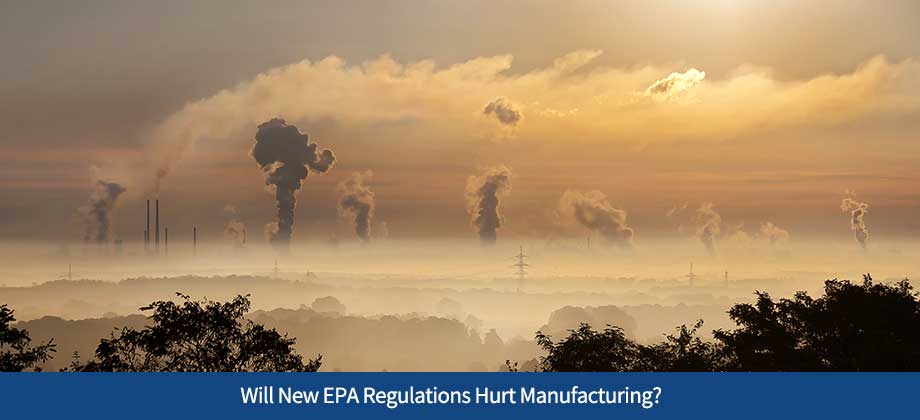Will New EPA Regulations Hurt Manufacturing?

Federal regulations are constantly being updated, released, removed, or otherwise. It’s hard to keep up with the ever-changing regulations area, especially for those busy running a business. In January, the Environmental Protection Agency (EPA) proposed revisions to air quality regulations that leaders in the manufacturing industry say could derail the current work the industry is doing to improve air quality. Let’s dive into these concerns a bit more.
The EPA announced a proposal to make revisions to the National Ambient Air Quality Standards (NAAQS) for fine particles, also known as PM2.5. These particles measure 2.5 micrometers or less in diameter, and the new proposal would reduce the standard from 12 micrograms per cubic meter to between 9 and 10 micrograms per cubic meter, according to the EPA’s website. The press release states that the revisions were announced “to better protect communities, including those most overburdened by pollution. Fine particles, sometimes called soot, can penetrate deep into the lungs and can result in serious health effects that include asthma attacks, heart attacks and premature death – disproportionately affecting vulnerable populations including children, older adults, those with heart or lung conditions, as well as communities of color and low-income communities throughout the United States.” Sources such as construction sites and smokestacks are the common outputs of particulate matter, but it can also form through reactions with chemicals emitted from power plants, cars, and industrial facilities. While the measure was passed with good intentions, the National Association of Manufacturers has another take.
Oxford Economics recently released a report commissioned by the National Association of Manufacturers that lays out the main concerns from industry executives on the EPA’s proposal. According to the findings, the regulations for PM2.5 “are projected to threaten $162.4 billion to $197.4 billion of economic activity and put 852,100 to 973,900 current jobs at risk, both directly from manufacturing and indirectly from supply chain spending. In addition, growth in restricted areas may be constrained, limiting investment and expansion over the coming years. Due to these limited opportunities for expansion or investment, these areas in nonattainment could lose out on an additional $138.4 billion in output and 501,000 jobs through 2027.” The one-pager can be downloaded here.
The main argument from NAM against this is with the reduction in air pollution that’s already underway without these new regulations. Pollution levels have declined drastically over the last several decades because of regulations already in place, in addition to an overall attitude of environmentalism that reaches far beyond just the manufacturing industry. From 1970 to 2019, emissions from the 6 most common pollutants (including PM2.5) dropped by 77 percent—and that’s while the economy in the United States grew, the population increased, energy use went up, and more vehicle miles were traveled.
Additionally, PM2.5 levels were reduced by 44 percent since 2000. In addition, there was thought from NAM that the regulatory hurdles introduced by the EPA’s proposals would stall clean energy projects already in progress. The economy is already very fragile, and efforts to bring manufacturing back to America could be negatively impacted.
NAM is urging industry leaders who oppose these new regulations to make their voices heard. You can also take a look at what other manufacturers are saying. And no matter where you stand on the matter, it’s still important to stay updated on what’s happening across the manufacturing industry. Stick with ARF Financial and the Financial Pantry to help distill all the information you need for success.
Your privacy is important to us. ARF Financial will never sell or rent your information to any third party. Click here for more information about our privacy policy.

